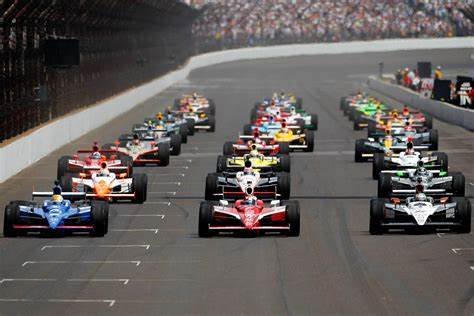The Indianapolis 500, often referred to as “The Greatest Spectacle in Racing,” is one of the most storied and prestigious events in motorsport history. Established in 1911, this thrilling race takes place annually at the Indianapolis Motor Speedway in Indiana and draws hundreds of thousands of fans from around the world. Here’s everything you need to know about this legendary race, from its history and format to how you can enjoy the experience to the fullest.
- A Brief History
The Indianapolis 500 debuted in 1911, quickly establishing itself as a marquee event in the world of motorsports. Throughout the years, the race has become synonymous with speed, bravery, and engineering prowess. Notable winners include legends like A.J. Foyt, Rick Mears, and Dario Franchitti, each with multiple victories, solidifying their place in racing history. The race has seen significant changes in technology, safety, and regulations, evolving alongside the sport itself.
- The Track
The Indianapolis Motor Speedway is a 2.5-mile oval circuit known for its unique layout and distinctive characteristics:
– Length: 2.5 miles (4.023 km)
– Configuration: Four distinct turns, each banked at 9 degrees, with two long straightaways.
– Seating Capacity: The Speedway can accommodate over 250,000 spectators, making it one of the largest sporting venues in the world.
- Race Format
The Indianapolis 500 is more than just a single race; it consists of several key components leading up to the main event:
Practice Sessions
– Several weeks leading up to the race include practice sessions, allowing teams and drivers to fine-tune their cars and gather data.
Qualifying
– Qualifying takes place over a weekend, determining the starting positions. The fastest drivers aim for the coveted first row, while others must fight to secure their spots in the race.
The Race Itself
– The race typically runs for 200 laps, covering a total distance of 500 miles. Strategy plays a crucial role, with teams planning pit stops for fuel and tire changes. The combination of high-speed driving and tactical decisions makes the race incredibly engaging.
- The Cars
Competitors use highly specialized vehicles built for speed and performance. IndyCar regulations govern the specifications of the cars, including:
– Engine: Cars are powered by turbocharged, open-wheel engines with extraordinary horsepower, enabling thrilling speeds.
– Chassis: Each team uses a chassis that complies with IndyCar standards, ensuring a level playing field while still allowing for innovative engineering.
- Fan Experience
Visiting the Indianapolis 500 is more than just watching a race; it’s an immersive experience:
Pre-Race Activities
– Fans can enjoy various festivities leading up to the race, including concerts, driver appearances, and fan zones filled with interactive exhibits.
Race Day Atmosphere
– The atmosphere on race day is electric, filled with excitement and anticipation. Arrive early to soak in the environment, connect with fellow fans, and explore the venue.
Viewing Options
– Whether you choose grandstand seats or spots on the infield, there are plenty of options to watch the race live. For those unable to attend, NBC usually broadcasts the event, providing an excellent viewing experience from home.
- How to Attend
Tickets
– It is essential to purchase tickets well in advance, as seats can sell out quickly, especially in popular areas. Various options are available, including general admission, reserved seats, and hospitality packages.
Travel and Accommodation
– Plan your trip to Indianapolis ahead of time; consider hotels, camping options, and transportation to and from the venue. The weekend of the race typically sees an influx of visitors, so early bookings are advised.
- The Legacy
The Indianapolis 500 has not only shaped motorsport but has also become a significant cultural event. The race has a storied tradition, including the iconic Borg-Warner Trophy, awarded to the winner, and the national anthem’s performance, which is a highlight each year. The event has a profound historical significance and continues to inspire generations of racers and fans.
Conclusion
The Indianapolis 500 is more than a race; it is an iconic celebration of speed, engineering, and the spirit of competition. Whether you’re a lifelong fan or a newcomer, attending this legendary event promises a unique and exhilarating experience. With its rich history, thrilling atmosphere, and unwavering dedication to motorsport, the Indianapolis 500 remains a cornerstone of racing culture and a must-see event for any motorsport enthusiast. So mark your calendars, gear up for an unforgettable experience, and get ready to celebrate “The Greatest Spectacle in Racing”!










